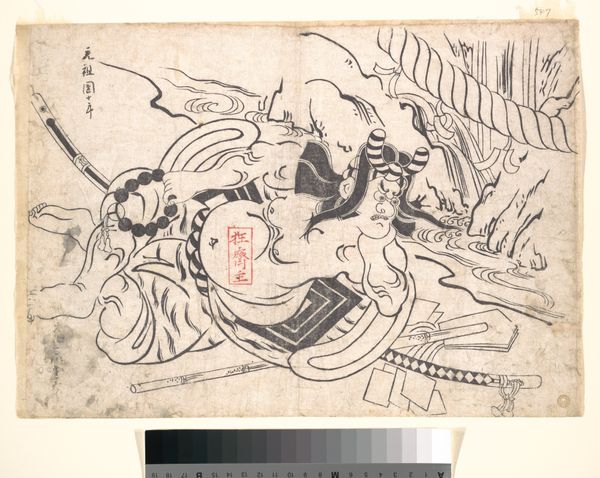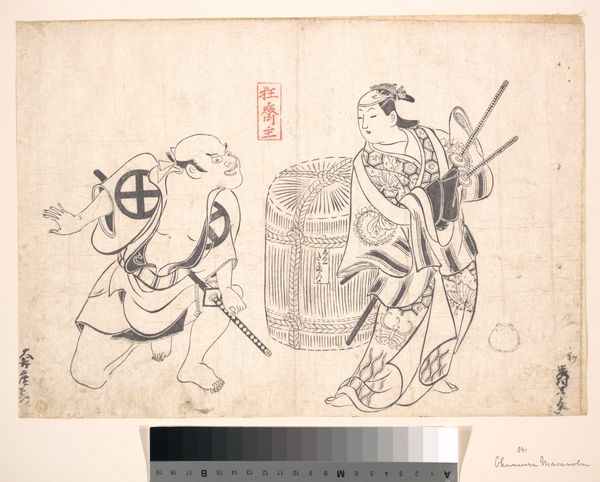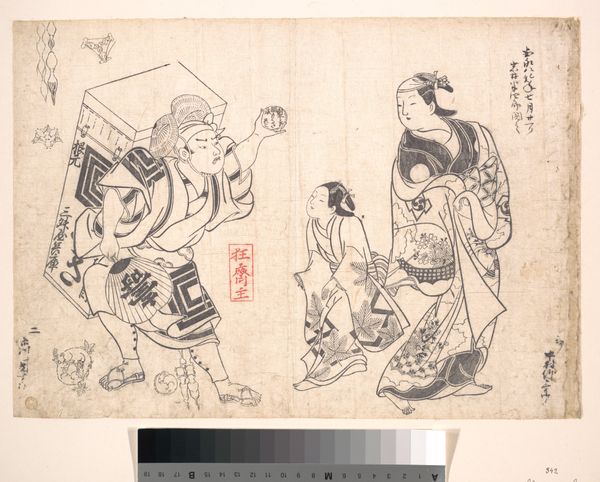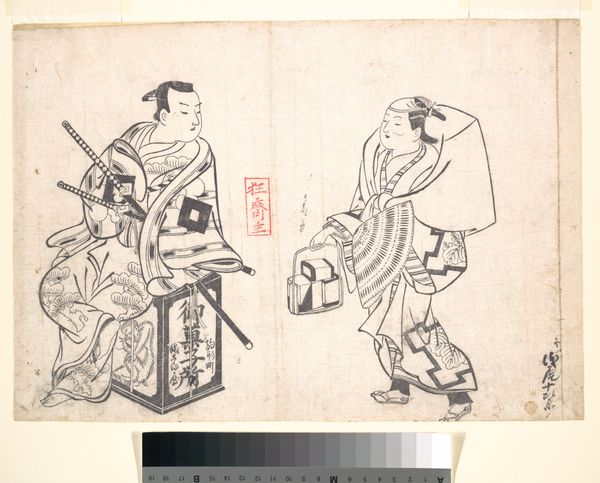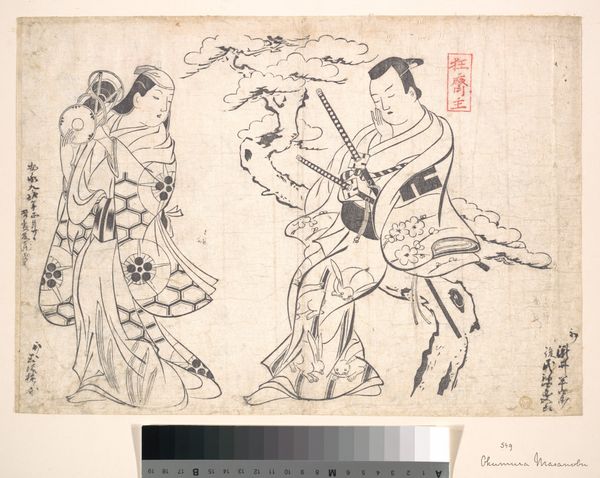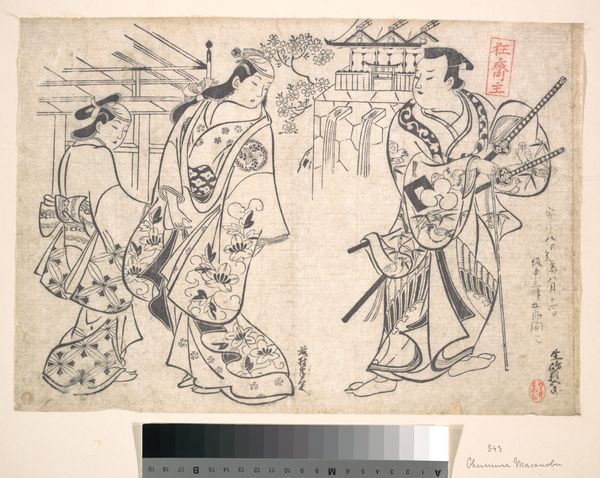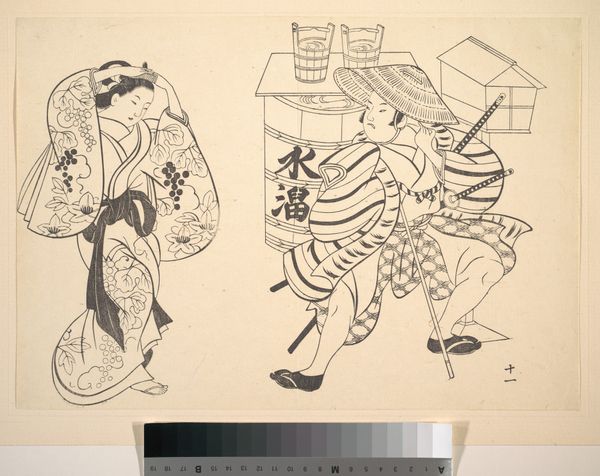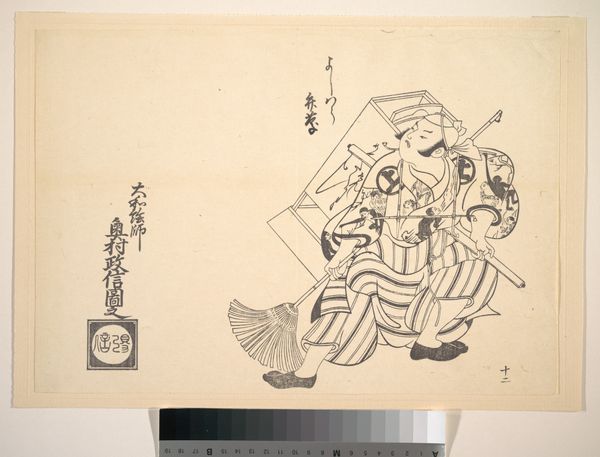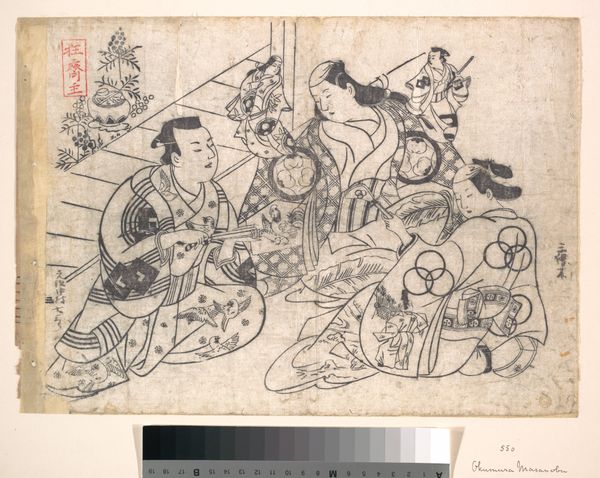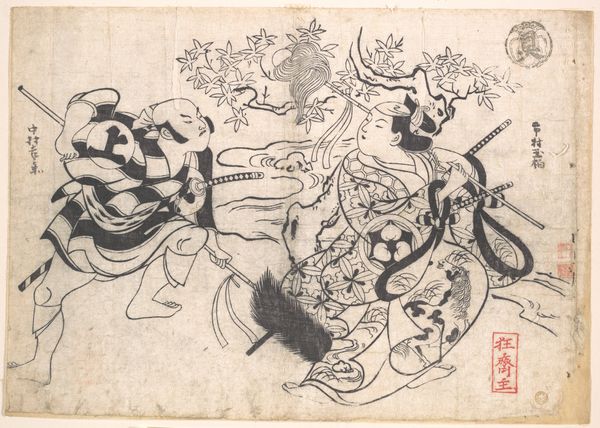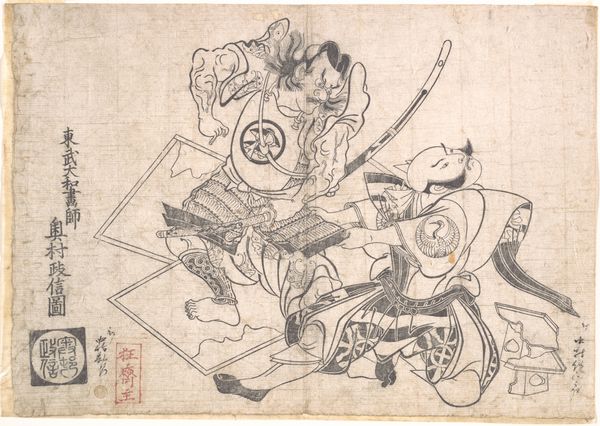
Mizuki Kikusaburo as a Woman Standing near a Small Stream and Looking at a Wandering Puppet-showman Impersonated by Ichimura Takenojo (Later Known as the 8th Ichimura Uzaemon) 1707 - 1711
0:00
0:00
drawing, print, ink
#
portrait
#
drawing
# print
#
asian-art
#
ukiyo-e
#
ink
Dimensions: 10 3/8 x 14 3/4 in. (26.4 x 37.5 cm)
Copyright: Public Domain
Curator: This print, currently held at the Metropolitan Museum of Art, is by Okumura Masanobu. The rather long title is "Mizuki Kikusaburo as a Woman Standing near a Small Stream and Looking at a Wandering Puppet-showman Impersonated by Ichimura Takenojo," dating from 1707-1711. It's rendered in ink on paper. Editor: It has a quiet, observant feel, almost as if we're eavesdropping on a scene. I'm drawn to the starkness of the lines and the flat perspective. How do you interpret the spatial arrangement? Curator: The composition speaks volumes about class and performance in the Edo period. Look at how the central figure, a Kabuki actor in the guise of a woman, observes the puppet showman, another actor. This blurring of identities points to the fluid social performance characteristic of theater. Editor: Absolutely. The figure in the kimono, Mizuki Kikusaburo, displays the mon, or crest, associating her with a particular lineage or guild—highlighting her manufactured identity. What’s striking is how fashion itself functions as a visual language. The patterns on the kimonos—their material construction, too—they signify social status and seasonal appropriateness. The very act of viewership becomes another type of consumption. Curator: Precisely! And notice how the puppet show itself mirrors the larger social theater. We see figures mimicking authority, with the puppet master embodying a powerful, perhaps satirical, figure. It's like a play within a play, a layered commentary on power and illusion. Editor: The water motif also can't be ignored, insinuating the ephemeral, transient aspects of life and art in Ukiyo-e. Considering its symbolism in dreams and folklore, water frequently serves as an omen of transformation. Curator: A keen observation! In terms of its materiality, the print demonstrates the efficiency and accessibility of woodblock printing. Produced for a wide audience, it speaks to the rise of a consumer culture that blurred boundaries between artistic expression and commercial enterprise. It’s fascinating to examine how ink and paper could convey such sophisticated social commentaries. Editor: I’m left thinking about how these images create lasting symbols—enduring representations of the roles we perform and the ways in which society continues to mimic and consume them. Curator: And for me, this artwork reflects the social realities and industrial techniques that can often become indistinguishable within an artwork.
Comments
No comments
Be the first to comment and join the conversation on the ultimate creative platform.
